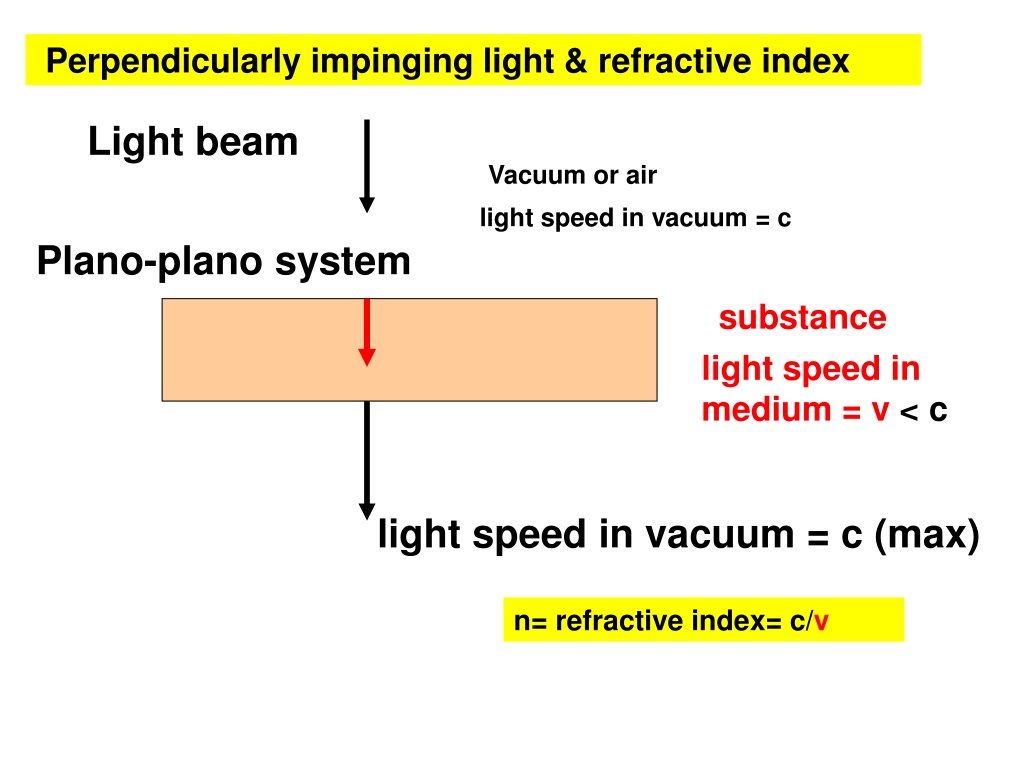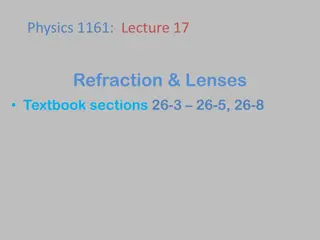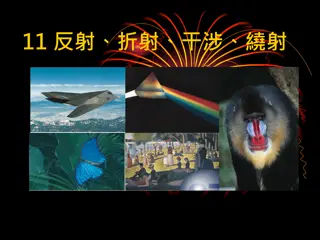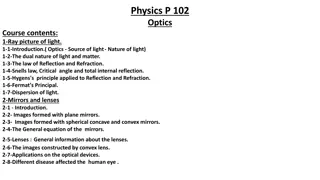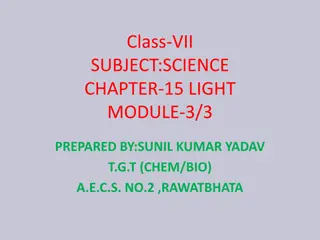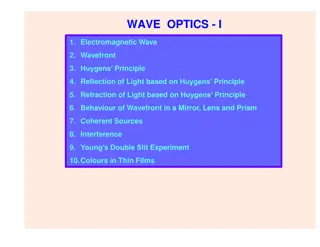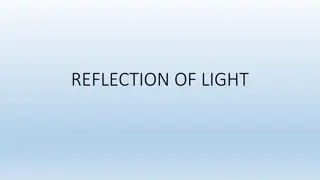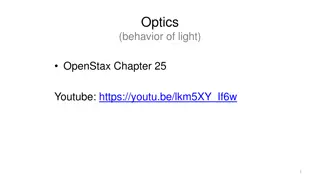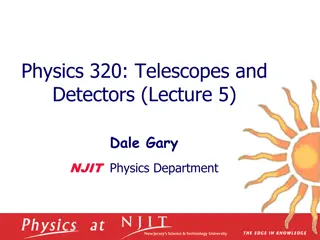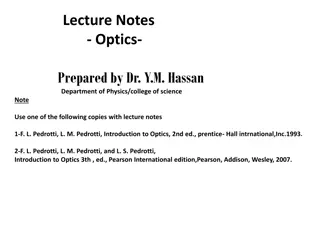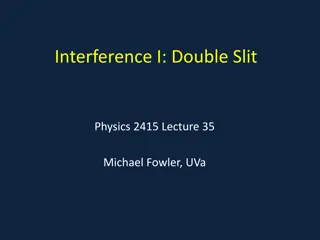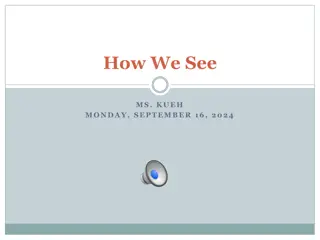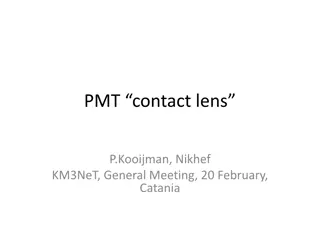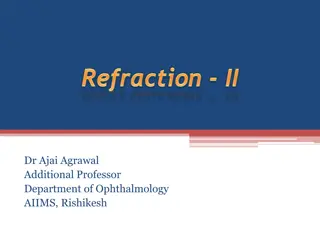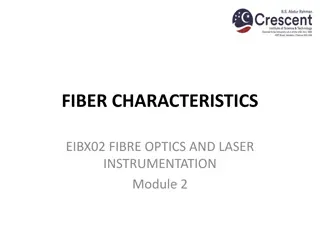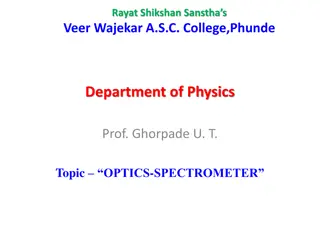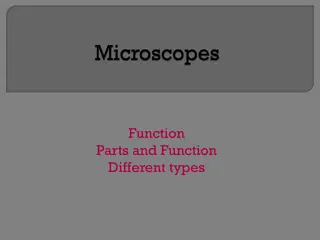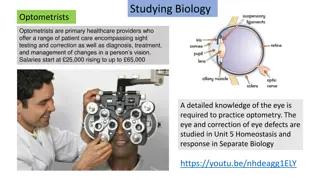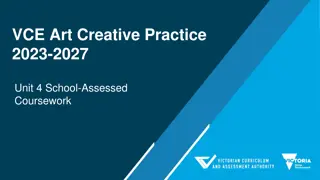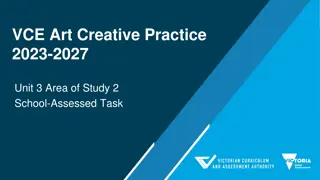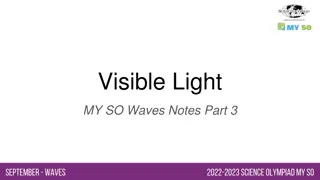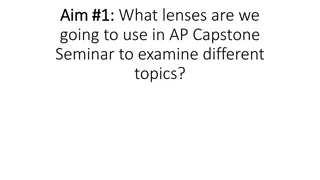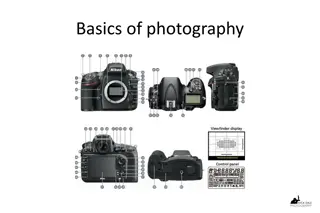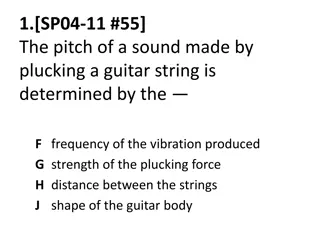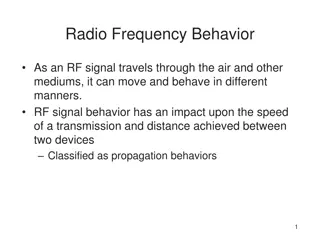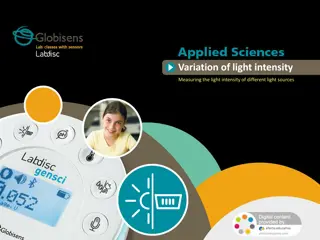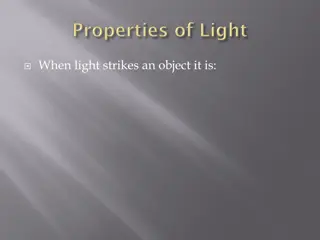Understanding Refraction in Optics: Light Behavior and Lenses
Delve into the principles of refraction with perpendicularly impinging light, Snell's Law, and the behavior of light in various mediums and lenses. Explore the concepts of focal distance, real image formation, and magnification through different types of lenses in optical systems.
Download Presentation

Please find below an Image/Link to download the presentation.
The content on the website is provided AS IS for your information and personal use only. It may not be sold, licensed, or shared on other websites without obtaining consent from the author. Download presentation by click this link. If you encounter any issues during the download, it is possible that the publisher has removed the file from their server.
E N D
Presentation Transcript
Perpendicularly impinging light & refractive index Light beam Vacuum or air light speed in vacuum = c Plano-plano system substance light speed in medium = v < c light speed in vacuum = c (max) n= refractive index= c/v
Typical values of n n=refractive index at 25 oC density (g/cm3) 1.0000 1.0003 distilled water 1.3330 window glass 1.510 lead glass 1.615 HgS (cinnabar) 2.814 ( axis) PbS (galena) 3.91 ( axis ) Material vacuum Air 0.0000 0.0013 0.9997 2.5 2.9 8.17 7.60
Acutely impinging light and Snells Law Plano-plano system A na Air or vacuum Glass, water . nb B Qualitative behavior Quantitative behavior: Snell s law Light bends towards perpendicular in moving from lower to higher refraction medium A sin A/sin B= nb/ na (and vice versa)
Parallel light through plano convex and double convex lens Focal line f f = focal distance Plano-Convex lens
Plano-convex versus double convex lenses Plano-convex lens f(double) < f(plano-convex) Double convex lens
Double convex lens in operation Double concave lens in operation
Real object imaging through double convex lens q O=object must lie outside of focal length Real image because an actual bundle of light appears here M = real image size/object size= q/f Real images are always inverted vs actual object
The first image magnifier: the simple hand magnifier glass
magnifying glasses-the virtual image Virtual image forms here 10 inches f Insect s real image paints the back of your eye s retina Lens f is << 10 inches so our eyes have trouble focusing brain `defaults to 10 inches and projects real image back in front of lens 10 inches from the real image on your retina
Simple and compound magnification M (simple) = Mo = 25/f + 1 the lensmakers formula Insertion of a second `eyepiece (simple magnification = Me) to enlarge real image after initial objective magnification leads to compounding of magnification Virtual image objective eyepiece Second real image (on back of eyeball) Mtotal= Mo x Me 1st real image Mo Me object
Spherical abberation Double convex only focal point different for parallel rays striking different portions of lens Uncorrected for Spherical aberration Corrected for Spherical aberration Double convex plano correction
Chromatic abberation No chromatic correction 2 wavelengths corrected to third (red & blue corrected to Na-D) = `achro
Language associated with objectives Glass quality E D S Increasing quality Spherically corrected plan One wavelength correction1 `achro Twowavelengthcorrection `apo Objectives increasing in quality E-plan D-plan achromat S-plan-apochromat 1 Corrected to same focal pt as Na-D line (589.3 nm)
More language R= resolution= 0.61 (nm) NA NA= numeric aperture =n sin (measure of light gathering power)
Low NA but area of lens larger=> brighter High NA but area of lens smaller=> darker
Phase contrast Wheel marked 0,10, 20 on stage of ASC s BH-2 scope is the phase annulus ring. There is a ring for each objective magnification
Phase resolved biological objects No phase correction With phase plate and annulus
